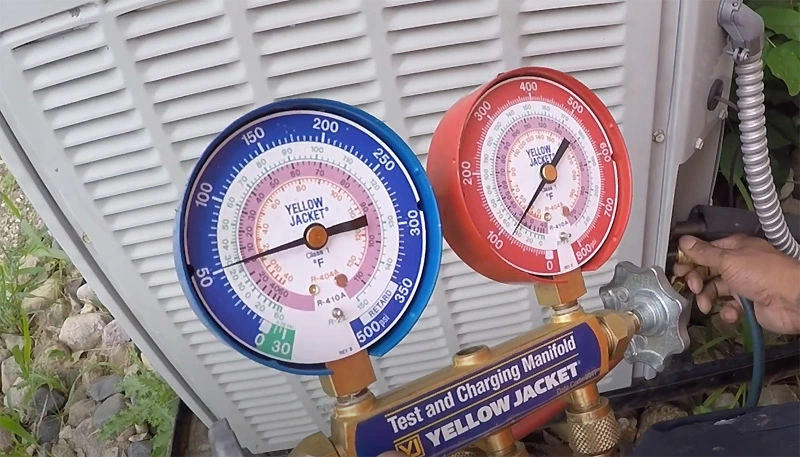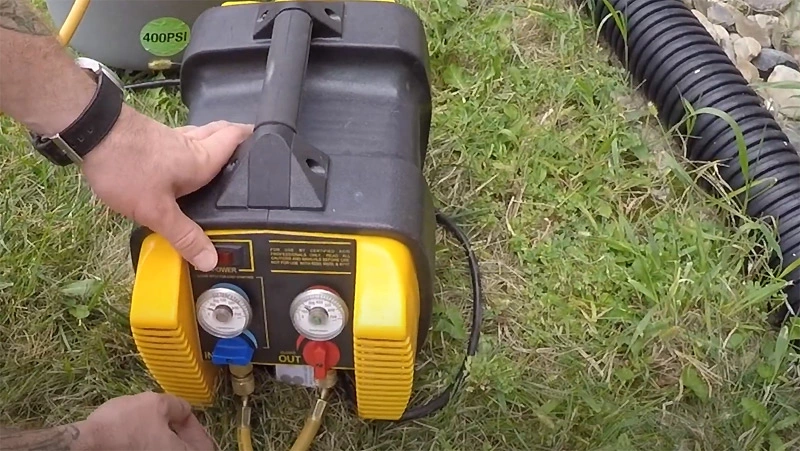When a technician is working on the HVAC or heating, ventilation, and cooling system of your home, the professional might need to disconnect refrigerant or air conditioner lines.
Most types of refrigeration, heating, and cooling systems make use of refrigerants for transferring heat. These refrigerants play an essential role in how the process of refrigeration works in this kind of equipment. The refrigerant gathers the heat from inside your house and transfers it afterward outside.
It is vital to be familiar with removing air conditioners without losing gas to prevent refrigerant-related issues brought about by contaminants.
What is refrigerant evacuation

From the name itself, you might think that refrigerant evacuation involves the evacuation or removal of refrigerant from the HVAC unit. But, this is actually meant to get rid of contaminants instead of the refrigerant itself.
Refrigerant evacuation specifically involves the removal of moisture, air, and nitrogen from HVAC systems.
HVAC units contain refrigerant within a pressurized and closed environment. If your air conditioner unit has a breach in it, there is a chance that refrigerant might escape. Also, contaminants such as moisture or air might enter your AC unit through this breach.
This breach might not drain all of the refrigerants of your unit. But, as some of its refrigerant escapes, air or moisture might end up replacing it.
Air is going to occupy the important space that could have been otherwise used for the refrigerant and this can make your AC unit less effective when it comes to keeping your house cool. On the other hand, moisture will also contribute to corrosion and consume space at the same time.
Refrigerant evacuation is a type of service that makes use of a vacuum for pumping moisture and air out of the refrigerant lines of your system. An AC technician will pump out all these contaminants from the system to ensure that they don’t trigger cooling problems.
There are three benefits associated with refrigerant evacuation in an air conditioner unit and these include the following:
- It prepares the air conditioning unit for complete repair such as compressor replacement.
- It ensures that the original refrigerant that the system contains doesn’t get released to the atmosphere.
- It can be used to charge a non azeotrope refrigerant.
This form of air conditioning maintenance is carried out by the external compressor that is attached through a service valve to the system.
How to disconnect AC lines or perform refrigerant evacuation

How is refrigerant evacuation different from pump down?
In a unit with no receiver, an AC system pump down will only allow maintenance from the outlet of the condenser to the compressor’s suction. In systems with receivers, a pump down allows maintenance on all parts of the air conditioning system except for the receiver.
Refrigerant evacuation, on the other hand, allows maintenance on every part of the unit. This process makes use of an external refrigerant cylinder and an external fluid mover.
Follow the steps below to disconnect AC lines:
- Shut down your air conditioning unit.
- Attach the pressure gauge and set it securely to the service valves.
You should connect the plain gauge set to the liquid line service valve while the compound gauge must be connected to the vapor line service valve.
It is important to ensure that the gauge set’s regulators are all in the closed position.
- A vacuum pump should be connected to the gauge set’s center manifold.
It is better if a dryer comes with the vacuum set as this will help in the removal of moisture from the evacuated refrigerant. It is also a must to have a cylinder for storing the refrigerant and this must pass the implemented regulations of the Environmental Protection Agency or EPA.
- Open the compound gauge side’s regulator.
- Operate the vacuum pump in order to draw out the refrigerant from your air conditioning unit.
- Wait until the pressure in the system has gets to 0. You can now stop the pump then close off the regulator.
- Observe for a rise in pressure.
If there is a rapid rise in pressure until it reaches atmospheric pressure, it means that there is a possibility for the connections to be loose. Make sure you tighten these conditions then do the 4th to 6th steps and observe.
If there is a rapid rise in pressure at this point, there is a chance that there is a leak in the system. Detecting, repairing, and recharging the leak is inevitable here.
If there is a slow rise in pressure, the system may have moisture or leftover refrigerant. You can now open the compound gauge regulator then continue with the evacuation.
- The pressure should be kept at 0 for half a day or several hours, depending on the AC unit’s size.
- Isolate the regulator of the gauge set and take out the gauge set.
- After the evacuation, you should do the necessary parts replacement or repairs.
- Conduct a leak test after the replacement or repair.
- Evacuate the refrigerant once again following the leak test. Start from the 2nd to 9th steps.
- Recharge the refrigerant with the use of the new or previous refrigerant.
There is a governing law on evacuation and it states that any recovered refrigerant must never be used or sold for other air conditioning units except when it has been re-processed by facilities approved by the EPA.
When do you need refrigerant evacuation?
Refrigerant evacuation must be typically done any time you open up the refrigerant environment of your AC unit. If you just want to change the air filter, there is no need for a refrigerant evacuation service.
The old air filter can be removed and replaced with the new one with no need to mess with the refrigerant. It is also a good idea to do it if you have a damaged AC unit and the technician must open it first to repair it.

